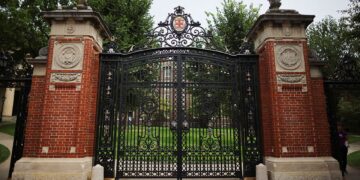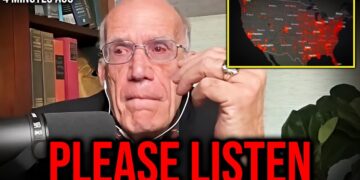Sale is literally nothing when you consider how far prices have gone up since 2020. this just isn’t the crash everyone has been predicting to put this reality into perspective let’s run through a quick example let’s say you were looking at a house at the start of 2020 that cost three hundred thousand
Dollars this same house using the case Shiller index as a baseline would have grown in value to 435 000 last summer so even with the current decline in prices we are far from those pre-pandemic levels everyone can remember but there is good news or bad depending on what side you’re on while
This decline seems like nothing there is reliable evidence that paints a different story you see home price declines are very rare going back to 1987 there has has only been three instances where we’ve had six straight months of declines one was in the early 90s during the hidden crash and of
Course the other was in 2008 which was the worst real estate decline since the Great Depression now one thing most buyers simply don’t understand is the pace at which Real Estate changes whether that’s up or down while it may be frustrating to hear things don’t happen as they do in the movies during
The last crash nearly 15 years ago things fell apart over a period of years not days or months the case Shiller peaked in July of 2006 and then fell 32 months in a row before doing a bit of a waving pattern until February of 2012. at this point here it had been five
Years and seven months since the start of the downturn the whole crash was a very slow-moving train wreck just think about where you were five years and seven months ago that takes us back to August 2017. now imagine this whole time prices were declining this was 2008 and
Despite this extremely long period of diminishing values the median price of a home in America only declined by about 27 percent so why do I say all that well part of the reason is to set an expectation if 2008 was the worst housing crash in modern American history
What can we realistically expect going forward on this channel I’ve gone over many pieces of evidence that show signs that this pattern will continue in the near future but where will home prices end up even if my assumptions are true and we get another crash to figure this
Out I first created my own graph using fat data that compares the 2008 downturn to the one that we’re currently experiencing specifically I went back three years prior to each Peak and indexed a Peak at 100 so you can see at this point right here is where 2008
Peaked at and this point right here is where 2023 peaked now one thing you’ll notice is that the run-up to the peak was more extreme this time around the numbers rapidly jumped up right around here which coincides with March 2020. now the important thing to notice about
This chart is that proves that as things stand today we are worse off today than an 08 that’s not an exaggeration either if we zoom in on the peak you can see that the six months following July 2006 which was when the last crash started we were down around 1.1 percent in
Comparison today we find ourselves down 4.4 this means if we are indeed at the start of a new crash we are starting at four times worse than last time just take a look at that 2023 line in comparison to 2006. when you factor in just how little time has passed since
This point we have never experienced a real estate market like this one on a national level the pace of this decline is unprecedented so while it feels like nothing historically speaking it’s record-breaking now there are a few things to note about the case Schiller index that sort of cloud this picture
For one it’s a lagging indicator that doesn’t really prove what’s going on on the ground right now it’s a measurement that takes a three month average for example the latest report was the December report we’re now in March and the data we’re reading is from home sales in October November and December
On top of this October data can contain closing prices from homes that were technically sold in August I mentioned this because remember starting in late August that’s when we really saw interest rates explode to extremes from August 4th to November 10th the average 30-year rate in the U.S went from 4.99
To 7.08 percent this put a massive burden on the market and likely had a serious contribution to prices falling in that period following November 10th we saw rates relax a bit and with the short-lived New Year bump I wouldn’t be so shocked to see that prices improved
In January so the next case Schiller report might snap the decline streak but it doesn’t change the overall trend while previously it was believed that low inventory levels wouldn’t allow for prices to drop that narrative is collapsing in front of our eyes I talk about this bill McBride chart a lot and
It essentially looks at National inventory levels and Compares them to the change in value throughout history we have seen that prices don’t ever decline until inventory reaches 6 months of Supply but 2022 has proved this completely wrong you can see in his latest article on his sub stack Bill
Outlines the 2022 and 2023 dots in comparison to the rest of history and we’re getting collapsing prices despite the fact that inventory is nearly three months of Supply this is developing clear outliers far outside the typical Trend and it shows you that you don’t really need inventory for prices to drop
At least this past year you haven’t then going forward if it remains true you can expect prices to continue to decline at record numbers but as I mentioned earlier the big question remains how low can we go remember the worst crash the 2008 crash had a peak to bottom decline
Of 27 so if you’re looking at a house today that costs four hundred thousand dollars where can you expect it to be if we indeed fall in this catastrophic range well here comes the bad news things are not going to get as affordable as you think even if if we
Crash in proportion to 2008. let’s run through a quick example so I can show you what I mean so like I was just saying let’s pretend you’re looking at a house today in the range of around four hundred thousand dollars if we assume that this next crash we’ll see prices
Decline 22 percent or about five percent less than the last crash we can expect that this 400 000 home will become three hundred and nine thousand you see the one thing people miss when talking about home prices is interest rates we know that around 75 percent of all homes are
Bought using a mortgage and 96 percent of you that watch this video won’t hit the like or subscribe button to change that I ask you to take a moment to do so if you’re enjoying the content thus far my last video got over 4 000 likes and I
Hope we can do the same with this one now back to the mortgage so like I was saying the majority of buyers buy with a mortgage this means discussing the price you pay for a home is only part of the equation as realistically most Americans should focus on their monthly payment as
Is the price that really affects how much your willing to give up to live in a certain home now during 2020 home affordability was actually close to record lows the average monthly payment for an American buying a house was around twelve hundred dollars a month since that time this average payment has
Jumped to 2486 dollars which is more than double than in 2020. so while home prices have technically risen 38 percent in that same time period monthly payments have gone up by one hundred percent so what’s the expectation then well we know that predicting interest rates in the future
Is close to Impossible but given the current inflation data it’s very unlikely that we’re going to get under five percent on a 30-year mortgage anytime soon as I speak into the microphone now the 30-year rate is above seven percent so even if we generously assume that rates come back down to this
Level it would still take a massive historic crash to bring monthly payments back in line with 2020. according to most estimates it would require the case Shiller to drop more than 35 percent from its peak price in July which remember would be significantly worse than 2008. essentially the FED just
Printed way too much money in the past few years and everything we know about prices including real estate prices has been altered the Baseline change and while we’re likely in the middle of a long crash that we’ll see values continue to decline it’s very unlikely that monthly payments ever come back to
The levels we saw prior to 2020. Simply put the Federal Reserve has created an unbelievable scenario where those lucky enough to have purchased a home prior to these massive rate hikes live in a different world compared to those that did not a permanent change has occurred in the system induced by the Central
Bank dividing people between the Haves and have-nots as Michael Antonelli puts it on Twitter this Goldman Sachs chart will likely go down in history it shows that 99 of outstanding mortgages have interest rates under the current level with most people locked in for 30 years at that two to three percent range the
Impact of this nobody understands but using simple logic it’s clear really a serious threat to the fabric of society think of it as a plug to supply who in their right mind would sell when their mortgage will be nearly two times more than the current one existing home sales
Will likely continue to be at sloth levels for the next couple of years and only those who have to move will do so thank you guys for watching as always please make sure you hit that like And subscribe button if you enjoyed it and let me know in the comments below what
You think of the current interest rate environment and how it compares to those 2020 levels

































 Reaction & Commentary
Reaction & Commentary















